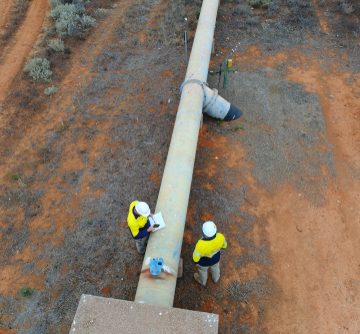A comprehensive inspection helps prevent failures, catastrophes and costly downtimes. Whether it’s a pipeline for oil or water, the dangers and costs are always serious for all the stakeholders.
How important is a comprehensive pipeline inspection
Operational integrity is a priority when it comes to pipes and tubulars in complying with the latest regulations and standards. These standards were formulated in the first place to best protect the assets and eliminate or minimise the dangers. Those dangers may arise from vulnerabilities as a result of manufacturing flaws such as defects in welds as well as cracking and corrosion.
Pipes and tubulars are constantly exposed to chemical, biological and physical elements. Gradually, these affect the operational integrity which is crucial in the water utilities and oil industries. When the operational integrity is compromised, the result is a costly downtime or worse, a major disaster that may cause injuries and fatalities.
How pipeline inspection is done
To prevent those injuries and fatalities as well as costly downtimes and site and environmental damages, a prompt and comprehensive inspection is a must. This is to allow engineers and technicians to immediately deploy repair procedures and damage control. These measures should be aligned with what the comprehensive inspection reveals.
The inspection is often a combination of methods such as visual, electromagnetic and ultrasonic. And because the assets and facilities should remain intact and operational, engineers and technicians use non-destructive testing methods (NDT). These methods often work by passing a signal and then interpreting what comes back. This principle applies even in the straightforward visual inspection method, where visible light hits the surface and then our brains interpret the reflection or the signal that’s coming back. In electromagnetic and ultrasonic testing methods, the varying properties of materials and components allow for varying signals to come back. For example, the electromagnetic and ultrasonic inspection of a material with almost no defect will show a different result compared to a material with corrosion and other flaws.
To perform such inspections, technicians use modern devices and equipment such as what you can find here at NDT Equipment Sales. As a corporate member of The Australian Institute for Non Destructive Testing (AINDT), The Australasian Corrosion Association (ACA) and Composites Australia, rest assured that you’ll receive competent technical advice. We can assist you in choosing the most appropriate NDT products for your specific application.


